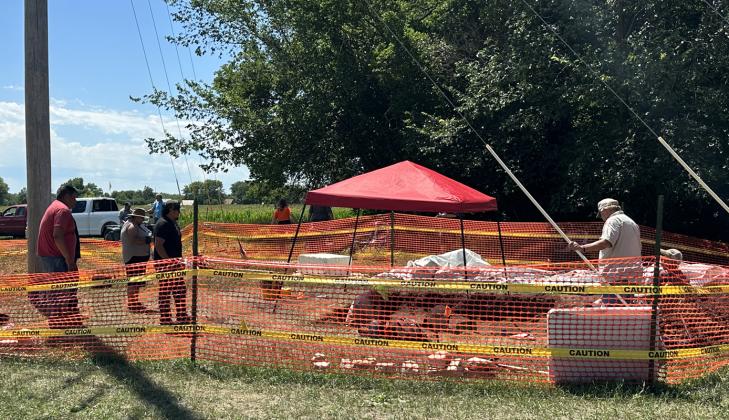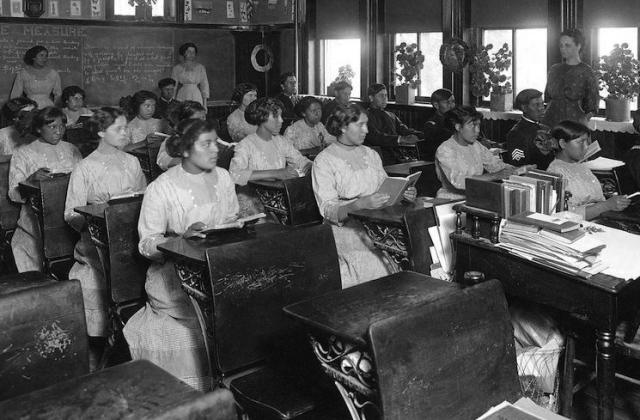State team searches for lost Indian School cemetery
GENOA — The search continues this week in Genoa as an archaeological team searches for human remains in connection to the Genoa Indian Industrial School.
Last week Nebraska State Archeologist Dave Williams and his team began the process of unearthing a possible site of the school’s cemetery. He said they have been working on the project since 2021. Last year they had a breakthrough when dogs alerted in the area of the dig. He said that ground penetrating radar was used and they found four “anomalies.”
“They look very grave-like,” he said. “They are lined up two and two.”
After consultation with the Nebraska Commission on Indian Affairs and a number of Indian tribes, it was decided to focus on the site of one of the four anomalies.
“We are trying to limit our disturbance to the whole area the best we can,” Williams said. “The first thing we are hoping is verification that the anomaly is or isn’t a grave or grave like feature.”
The Genoa Indian Industrial School opened in 1884 and closed in 1931. It is believed to have been home to more than 20,000 students from more than 40 tribes from all over the country.
“The cemetery has been lost for almost 100 years since the school closed,” Williams said. “We know it existed. There are mentions of it. Student letters mentioned it. There are notes about the cemetery in different records. But nothing about where it was or how many burials there were, how many graves and how they were buried in the cemetery.
“There is a history of uncertainty about where did those kids end up,” he added. “And culturally they are not put to rest.”
Judi gaiashkibos is the executive director for the Nebraska Commission on Indian Affairs. Her mother was a former student at the Genoa Indian Industrial School. She said it is a sacred honor that she can be involved in the search for the students’ remains.
“She got to go home and have children,” gaiashkibos said. “These children who died here didn’t.
“I want to give these families the right to have their children back,” she said. “I want them to have full circle healing. I want the United States and the State of Nebraska to acknowledge that this really happened and to be honest about what happened; to be truth seekers and truth tellers about what happened here in Nebraska.”
The team has not yet found any human remains. Williams said that his team needs to dig down nearly 8 feet to the 1930’s ground level. The site was covered with dirt from the canal. The excavation continues this week.
“In a perfect world we would find all the children underground in a coffin and we could figure out which child went to whom, but that isn’t the way it is,” gaiashkibos said. She said it is important to locate the students’ remains to allow the tribes to heal and perform burial ceremonies that were not afforded to the students when they died 100 years ago.
gaiashkibos said that they know every student who died at the school, including their tribe and even the cause of death. She said that some students died of tuberculosis, pneumonia and accidental shootings. Not all of the causes of death are believable, gaiashkibos said, noting that one student’s cause of death was listed as eating too much candy.
“How can you die of eating too much candy,” she said. “Where did they get the candy? I do not believe that.”
She said that she believes that some of the students were homesick and broken, not being able to speak their native languages.
“You could not hear any of your prayers,” she said. “Not hearing anyone from your family, it’s a place like a prison.”
gaiashkibos said that her mother took the good that she learned at the school, such as cooking and baking, and used it to support her and her nine brothers and sisters.
“You take the best and leave the rest and not revictimize yourself,” she said. “We could be anything you could be. We did not have to be servant, slave labor.”


